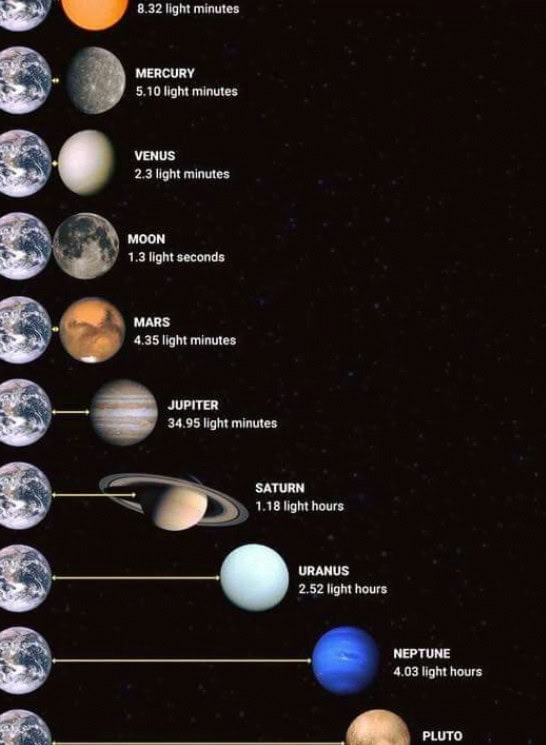
Undoubtedly, my esteemed audience with a passion for astronomy is well aware of the concept of a light-year. It represents the vast expanse covered by light in the span of a year, amounting to nearly 9.5 trillion kilometers! Moreover, they are also acquainted with the fact that our closest celestial body, a star, is situated at a distance of 4.2 light-years. However, these numerical values may appear rather abstract, failing to provide a tangible sense of their enormity. The utilization of the term “light-year” is precisely due to the gigantic figures in kilometers, rendering them almost incomparable to anything else. Take, for instance, our neighboring star Proxima Centauri, which lies at a staggering distance of 35,950,775,795,807 kilometers or equivalently 4.2 light-years. It is evident that this last figure does not seem as intimidating.
Let’s explore the concept of a light-year and contemplate if it is even conceivable to traverse such an immense distance.
The Comparison: Formula One vs. a Light-Year
As we marvel at the incredible speed of Formula One racing, it’s important to note that the distance covered in a Formula 1 Grand Prix (excluding Monaco) is approximately 305 kilometers. The fastest ever recorded Grand Prix race, accomplished by Michael Schumacher in 2003, saw him crossing the finish line in just one hour, 14 minutes, and 19 seconds. This impressive feat equates to an average speed of nearly 248 kilometers per hour.
If we minimize the aerodynamic drag and have a very long straight, a Formula 1 race car has the potential to reach speeds of 400 km/h. Now, let’s imagine a scenario where we have an infinitely long straight track. We don’t have to worry about refueling or changing tires, and the race car is consistently traveling at 400 km/h. In this hypothetical situation, it would take the Formula 1 race car a little over a month to cover the same distance that light travels in just ONE SECOND! Furthermore, if our race car were to travel for a light year, it would take approximately 2.7 million years to complete the journey.
MIG-25.
Alright. In this scenario, the quantity is once again beyond imagination. So, let’s opt for something even more formidable. Let’s hop into a MIG-25 and ascend into the heavens. This aircraft, utilized as both a fighter and a tactical bomber and reconnaissance plane, is capable of achieving speeds of approximately 3500 km/h! Once again, assuming it can operate without requiring refueling and other factors.
Our MIG-25 will traverse a distance of 300,000 kilometers, equivalent to the distance light covers in a single second, in a mere seventy-eight hours. This, naturally, is significantly faster than a Formula 1 race car. However, when faced with the span of one light year, our aircraft will be compelled to surrender. It would take a staggering 308,571 years to complete such a journey!
ISS and New Horizons
Clearly, we require something swifter! If we gaze skyward on a cloudless evening, we may be fortunate enough to catch sight of an exceedingly luminous celestial body zooming past from west to east at a rapid pace. This celestial body, often mistaken for a “star,” is the ISS. It circles the Earth at a velocity of 28,000 kilometers per hour. Let us examine if the ISS can swiftly traverse a distance of one light-year. The ISS necessitates 10 hours and approximately 40 minutes to cover one light second. Hmm. That appears to be more or less satisfactory. However, it would take the ISS nearly 38,545 years to journey a light-year!
A common question among interested individuals is how quickly a spacecraft would need to travel over light-years in order to be considered acceptable for research purposes? For instance, it took New Horizons a total of 10 years to reach its designated destination. Let’s use this 10-year timeframe as a standard. To cover a distance of one light-year in 10 years, we would require a velocity of 107,925,000 km/h!
However, even this incredibly unrealistic speed is insufficient for obtaining prompt results when it comes to exploring other star systems. By the time the initial images of the planets within the Proxima Centauri system arrive on Earth, the scientist leading the mission will already be in their 70s, having started the endeavor 30 years prior.
These are the vast distances found in outer space. So, when someone informs you that Proxima Centauri is merely 4.2 light-years away, it’s worth viewing these individuals with a hint of irony.

A light-year is a unit of measurement used to quantify distance, rather than time (despite its name). A light-year is equivalent to the distance that a beam of light can travel in the span of one Earth year, which is approximately 9.5 trillion kilometers (or 6 trillion miles).
When it comes to measuring distances on a cosmic scale, using kilometers or miles is not particularly practical. This is why the concept of the light year was introduced. In the same way that you might measure the distance to a nearby grocery store by the time it takes to drive there (“The grocery store is 15 minutes away”), astronomers measure the distance to stars based on the time it takes for light to reach us. For instance, the nearest star to our Sun, Proxima Centauri, is located 4.2 light-years away.
What is the distance of a light year?
The speed of light is constant throughout the universe and is highly accurate. In a vacuum, it travels at a speed of 1,079,252,849 km/h (670,616,629 mph). To calculate the distance of one light year, you need to multiply this speed by the number of hours in a year (8,766). The result is that one light year is equivalent to 9.5 trillion kilometers (5,878,625,370,000 miles). While this distance may seem incredible at first, it is actually quite small when compared to the vast scale of the universe.
What is the purpose of using light-years?
Using kilometers or miles to measure astronomical distances would be highly inconvenient and unfeasible. The distance from our galaxy’s center is approximately 27,000 light-years. The nearest spiral galaxy, the Andromeda Galaxy, is situated 2.5 million light-years away. Certain galaxies that are visible to us are billions of light-years distant.

More on the topic:
Using light-years as a unit of measurement also allows astronomers to determine the age of celestial objects. This is because the light we see from distant objects has taken time to reach us, so what we observe in the night sky is actually a snapshot of the past. For example, when we look at something that is 1 light year away, we are seeing it as it appeared one year ago. In the case of the Andromeda galaxy, which is 2.5 million light years away, we are observing it as it looked 2.5 million years ago. The cosmic microwave background, the most distant object we can see, is also the oldest image of the universe, dating back to just after the Big Bang approximately 13.8 billion years ago.
Instead of using the light-year, astronomers also have the option to use the parsec as a unit of measurement. The parsec, which stands for “parallax-second,” is derived from the method of triangulation that is used to calculate the distance to stars. Specifically, it is the distance to a star that appears to shift by 1 angular second in the sky after the Earth completes half of its orbit around the Sun. This value is equivalent to 3.26 light-years.
Similar to degrees, the light-year can be further divided into smaller units such as light hours, light minutes, and light seconds. For instance, the Sun is located more than 8 light minutes away from Earth, while the Moon is just over one light second away. These terms are commonly used by scientists when discussing communication with space satellites or rovers. Due to the finite speed of light, it can take over 20 minutes to send a signal to the Curiosity rover on Mars.
Whether it’s light-years or parsecs, astronomers will continue to utilize these units of measurement to gauge distances within our expansive universe.
While exploring our own planet, people have devised various systems for measuring distance over the course of centuries. Consequently, it was agreed upon to establish the meter as the universal unit of length and to measure longer distances in kilometers.
However, the arrival of the 20th century presented a new challenge for humanity. People began to delve into the study of the cosmos and soon discovered that the vastness of the Universe is so immense that kilometers are inadequate for measuring such distances. While conventional units can still be used to express the distance between Earth and the Moon or Earth and Mars, attempting to determine the number of kilometers between our planet and the nearest star results in an unimaginable figure with an abundance of decimal places.
What is the equivalent of 1 light-year?
It became evident that the exploration of space necessitated a new unit of measurement, which came to be known as a light-year. In a single second, light covers a distance of 300,000 kilometers. A light-year – is the distance that light travels in precisely one year – and when translated into a more familiar numerical system, this distance is equivalent to 9,460,730,472,580.8 kilometers. Clearly, it is much more convenient to utilize the concise term “one light-year” rather than employing this vast figure in calculations every time.
Among the stars in close proximity to us, Proxima Centauri stands out as it is located at a distance of “only” 4.22 light-years. Of course, when considering the figure in terms of kilometers, it becomes unimaginably vast. Nevertheless, everything is relative – if we take into account that the nearest galaxy known as Andromeda is a staggering 2.5 million light-years away from the Milky Way, Proxima Centauri truly appears as a remarkably close neighbor.
Incidentally, the utilization of light-years assists scientists in comprehending where it is logical to search for intelligent life in the vast expanse of the Universe, and where transmitting radio signals would be utterly futile. Considering that the velocity of a radio signal is comparable to that of light, any salutation dispatched to a far-off galaxy will only arrive at its intended recipient after millions of years. It would be wiser to anticipate a response from nearer “neighbors” – entities whose hypothetical response signals could conceivably reach Earth’s instruments within the span of a human lifetime.
How many Earth years equal one light year?
There is a common misunderstanding that a light year is a measure of time. However, this is not the case. The term “light year” does not refer to Earth years and does not have any connection to them. Instead, it solely represents the distance that light can travel in the span of one Earth year.
What is the distance measured in light years?
Light travels a distance of 300,000 kilometers in just one second. A light year corresponds to the distance traveled by light in a period of 12 months. In terms of kilometers, this is equal to approximately 9,460,730,472,580.8 kilometers, which is approximately 9.46,1015 kilometers.
Using the term “light years” is more convenient than dealing with such enormous distances in kilometers. However, there are approximate values for the different units:
1 light second is approximately equivalent to 300,000 kilometers.
1 light minute is approximately equivalent to 18 million kilometers.
1 light hour is approximately equivalent to 1,080,000,000,000 kilometers.
1 light day is approximately equivalent to 26,000,000,000,000,000 kilometers.
1 light week is approximately equivalent to 181,000,000,000,000 kilometers.
1 light month is approximately equivalent to 790,000,000,000,000,000 kilometers.
What is considered too much?
Assuming the spaceship is traveling at the third cosmic speed (approximately 16.8 kilometers per second), it would take 18,000 years for the ship to cover one light year. In the case of our galaxy, the Milky Way, which has a diameter of approximately one hundred thousand light years, the ship would need to fly for nearly 2 billion years to traverse it!
The nearest star to the Sun is Proxima Centauri, which is about four light years away. When converted to kilometers, this distance is incredibly vast.
However, if we compare the distance from Proxima Centauri to the closest galaxy, the Andromeda Nebula, the star appears relatively close, as Andromeda is located two and a half million light years away from the Milky Way. It would take a spacecraft 35 billion years to reach it.
What other applications do light years have?
Light years are employed in helping us identify potential locations for intelligent civilizations in the universe. This approach enables scientists to determine suitable areas for sending radio signals and areas where it would be ineffective.
The process involves comparing the speed of light with the speed of a radio signal. It is discovered that sending messages to destinations that would take thousands or even billions of years to reach is entirely pointless. Instead, it is logical to search for nearby civilizations by transmitting signals that can be received within a single human lifespan.
What is the equivalent of light years in Earth years?
There is a common misconception that light years measure time, but this is fundamentally incorrect. Light years are not a measure of time and have no correlation with Earth years. Instead, they represent the distance that light travels in one year on Earth.
When it comes to measuring cosmic distances, ordinary units like meters and kilometers are not sufficient, so astronomers use alternative units. One such unit is the light-year.
Many science fiction enthusiasts are familiar with the concept of light years, as it is often featured in movies and books. However, not everyone understands its true meaning, and some mistakenly believe it to be a measure of time similar to Earth years.
What does the term “light year” mean?
Contrary to popular belief, a light year is not a measure of time but is actually a unit of length commonly used in the field of astronomy. It represents the distance that light can travel in the span of one year.
Typically, the concept of a light year is utilized in astronomical literature and science fiction to determine distances within our own solar system. However, when it comes to more precise mathematical calculations or measuring distances on a cosmic scale, another unit of measurement is employed as the standard.

The emergence of the light-year in the field of astronomy can be attributed to the advancements made in stellar sciences and the necessity to utilize parameters that correspond to the vastness of space. The concept was introduced a few years following the successful determination of the distance between the Sun and the star 61 Swan in 1838.
Initially, the light year was defined as the distance traveled by light during one tropical year, which encompasses a complete cycle of seasonal changes. However, since 1984, the Julian year (365.25 days) has been adopted as the reference, resulting in more precise measurements.
How is the speed of light measured?
In order to determine the light year, scientists needed to first measure the speed of light. In the past, astronomers believed that light traveled instantaneously through space, but this theory was challenged in the 17th century.
Galileo Galilei was one of the first to attempt calculations in order to determine the time it takes for light to travel a distance of 8 km. However, his efforts were unsuccessful. It wasn’t until 1728 that James Bradley was able to approximate the speed of light, determining it to be 301 thousand km/s.
How fast does light travel?
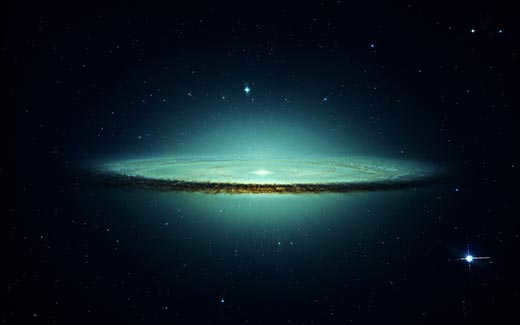
Even though Bradley’s calculations were quite accurate, it was not until the 20th century that the exact speed could be determined using modern laser technology. The advanced equipment allowed for calculations to be made with a correction for the refractive index of the rays, resulting in a value of 299,792,458 kilometers per second.
Astronomers continue to work with these figures today. Furthermore, these calculations have helped accurately determine the time it takes for the rays to orbit the globe without being influenced by gravitational fields.
Although the speed of light is incomparable to the distances on Earth, it is still used in calculations because people are accustomed to thinking in “terrestrial” terms.
If we consider that the distance covered by light in one second is 299,792,458 meters, it’s simple to compute that light travels 17,987,547,480 meters in a single minute. This information is commonly utilized by astrophysicists to determine distances within planetary systems.
When it comes to studying celestial bodies on a universal scale, it’s much more convenient to use a light year as a reference. A light year is equivalent to 9.460 trillion kilometers or 0.306 parsecs. It’s during the observation of cosmic bodies that humans have the unique opportunity to witness the past with their own eyes.
It takes numerous years for the light emitted from a distant star to reach Earth. Because of this, when observing cosmic objects, we see them not as they are in the present moment, but as they appeared at the time the light was emitted.
Illustrations of Distances Measured in Light Years
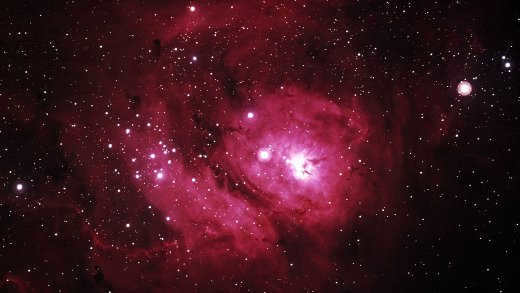
Thanks to the ability to calculate the speed of light, astronomers have been able to determine the distance to many celestial bodies in light-years. For instance, the distance from our planet to the Moon is equivalent to 1.3 light seconds, while the distance to Proxima Centauri is 4.2 light years and the distance to the Andromeda Nebula is 2.5 million light years. Additionally, the distance between the Sun and the center of our galaxy is approximately 26 thousand light years, and the distance between the Sun and the planet Pluto is 5 light hours.
When you hear the phrase “Tatooine is 20 light years away,” it raises some legitimate questions. Here are a few of them:
So, what exactly is a light year?
What is the duration of a spacecraft’s journey from Earth to travel a unit of measurement known as a light-year?
In today’s article, I have decided to elaborate on the significance of this measurement unit by comparing it to our usual kilometers and showcasing the vastness of the Universe.
Let’s envision an individual who is recklessly speeding down the highway at a velocity of 250 km/h, disregarding all regulations. In a span of two hours, they would have covered a distance of 500 kilometers, and within four hours, they would have traveled an astonishing 1000 kilometers. That is, of course, if they do not encounter any accidents along the way…
One might assume that this is an impressive speed! However, to complete a circumnavigation of the Earth (approximately 40,000 km), our daredevil racer would require a significantly longer duration. It would amount to 40 times more time, specifically 4 x 40 = 160 hours. In other words, nearly an entire week of non-stop riding!
Ultimately, however, we won’t state that he journeyed 40,000,000 meters. Because our inclination towards laziness has always compelled us to invent and utilize shorter alternative units of measurement.
It is common knowledge from high school physics that the swiftest traveler in the universe in the universe is light. In a mere second, its beam covers a distance of approximately 300,000 kilometers, enabling it to circumnavigate the Earth in 0.134 seconds. That’s a staggering 4,298,507 times faster than our virtual racer!
When traversing from Earth to the moon, light takes an average of 1.25 seconds for the journey. When traveling to the Sun, it requires slightly over eight minutes to reach our celestial neighbor.
Therefore, a light-year is simply the distance that a beam of light travels in the span of one year. When dealing with distances on an interstellar scale, it becomes impractical to use units of measurement smaller than this. However, there are some smaller distance units that can be used. Here are their approximate values:
1 light second ≈ 300,000 km;
1 light minute ≈ 18,000,000,000 km;
1 light hour ≈ 1,080,000,000,000 km;
1 light day ≈ 26,000,000,000,000 km;
1 light week ≈ 181,000,000,000,000 km;
1 light month ≈ 790,000,000,000,000 km.
Now, in order to understand the origins of these numbers, let’s calculate the equivalent distance of one light year.
There are 365 days within a single year, 24 hours in a day, 60 minutes within an hour, and 60 seconds in a minute. Therefore, a year is comprised of 365 x 24 x 60 x 60 x 60 = 31,536,000 seconds. In the span of one second, light can travel a distance of 300,000 kilometers. As a result, over the course of a year, light will cover a total distance of 31,536,000 x 300,000 = 9,460,800,000,000,000 km.
This numerical value can be expressed as TWENTY TRILLION, FOUR HUNDRED SIXTY SIXTY MILLION MILLIONS, and EIGHT HUNDRED MILLION kilometers.
Naturally, the precise measurement of a light-year differs slightly from our calculation. However, when discussing stellar distances in popular scientific articles, absolute accuracy is not crucial, and a discrepancy of a couple hundred million kilometers will not significantly impact the content.
Now, let us proceed with our thought experiments…
Assuming that a contemporary spacecraft is departing our solar system at a velocity of 16.7 kilometers per second, it would take 18,000 years to traverse the initial light-year!
It would take approximately 78,000 years for the spacecraft to travel 4.36 light-years to the nearest star system, Alpha Centauri. (refer to the image above)
If the spacecraft were to travel across our Milky Way galaxy, which spans about 100,000 light years, it would require 1 billion 780 million years.
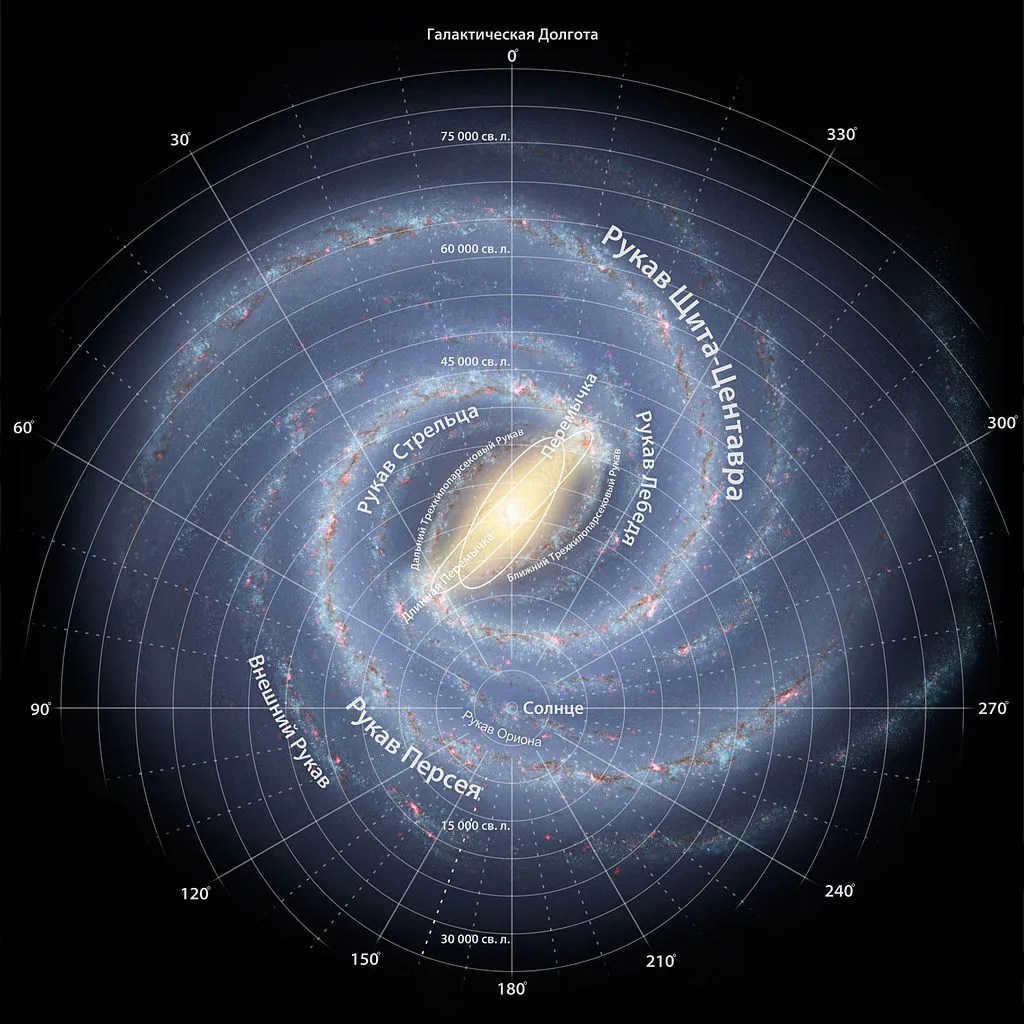
And it would take the spacecraft approximately 36 billion years to reach the nearest galaxy, which is the closest large galaxy.
That’s quite a long time, considering that the universe itself is estimated to have only begun about 16 billion years ago.
The scale of the cosmos can be mind-boggling, even just within the boundaries of our solar system, which is already quite vast. This concept is beautifully portrayed in the project “If the Moon were only 1 pixel” by its creators, where they showcase the immense size of our solar system: http://joshworth.com/dev/pixelspace/pixelspace_solarsystem.html.
And that’s it for today’s article. Feel free to leave your questions, comments, and suggestions in the comments section below.
Occasionally, we receive inquiries that are quite intriguing, with answers that are quite unconventional. One such inquiry is presented in the title. Indeed, how many Earth years are equivalent to one light year? It may be disappointing, but the correct response is zero. How can this be?
This is because a light year is not a unit of time, but rather a unit of distance. To be more precise, a light year represents the distance that light travels in a vacuum, unaffected by gravitational forces, over the course of one Julian year (which is equivalent to 365.25 standard days or 31,557,600 seconds), as defined by the International Astronomical Union.
Let’s attempt to calculate the distance of a light year. To accomplish this, we will use the speed of light, which is 300,000 kilometers per second, and multiply it by 31.56 million seconds, which is the number of seconds in a year. This calculation results in the enormous value of 9,460,800,000,000,000 km (or 9,460,000,000 million kilometers). This remarkable number represents the distance equivalent to a light year.
- 1 light month is approximately 788,333 million kilometers.
- 1 light week is approximately 197,083 million kilometers.
- 1 light day is approximately 26,277 million kilometers.
- 1 light hour is approximately 1,094 million kilometers.
- 1 light minute is approximately 18 million km.
- 1 light second is approximately 300 thousand km.
Recommended articles regarding this subject
Are you aware of the definition and duration of a light year?
Based on the frequency and volume of searches on the internet, it is evident that the concept of a “light year” is still not fully comprehended, which is understandable given its potential for ambiguity. When we hear the word “year,” we naturally associate it with a measure of time, but in this case, that is incorrect.
For this reason, we have decided to delve into the topic of light years and their relation to interstellar travel and space exploration in general. If you have an interest in this subject and would like to expand your knowledge, we highly recommend reading this fascinating article in its entirety.
Space is an exciting place, but so is our planet; Earth. In this article we will be discussing the five movements of Earth
What exactly is a light year?
To clear up any misconceptions, it is important to understand that a light year is not a measurement of time. Instead, it is a unit of measurement used to gauge vast distances in the universe.
The term “light year” gets its name from the way it is calculated. Essentially, a light year is the distance that a photon (the particles that make up light) can travel in the vacuum of space over the course of one Earth year (365 days of 24 hours).
In simpler terms, a light year is the distance that an object can travel through the vacuum of space in the span of one year, moving at the speed of light, which is 300,000 kilometers per second.
This idea was derived from Einstein’s general theory of relativity in 1905, where the velocity of light was established as the universal speed limit for all objects in the cosmos, and thus serves as a benchmark for the movement of matter in the interstellar realm.
Kilometers equivalent to light years.
Once this notion is comprehended, the immediate question that arises in the minds of individuals, whether young or old, is why not measure the distance between stars in kilometers? or What is the conversion rate from light years to kilometers?
Well, the answer to the first question leads us to determine the second. Interstellar distances cannot be measured using the same unit of measurement employed on Earth, simply because they are exponentially larger, thus resulting in distances (even relatively short ones) being expressed in numbers that are virtually incomprehensible to most people.
The solution to the second inquiry is quite straightforward! Indeed, there exists a predetermined exchange rate by which you can establish the correspondence between a single light-year and a solitary kilometer on Earth. In brief, light that traverses through the vastness of space at a consistent pace of 299,724,365 kilometers per second manages to cover a grand total of 9 XNUMX XNUMX XNUMX XNUMX XNUMX XNUMX XNUMX kilometers over the course of a Julian year (9,460,730,472,580.8 days). That amounts to just a tad under XNUMX billion kilometers within the span of one year.
Cosmic Distances

A distance of 9 trillion kilometers may seem like an incredibly vast expanse: a number with twelve zeros at the end! This distance is so immense that the entirety of our planet would only cover a minuscule fraction of it, rendering our existence completely insignificant in comparison.
However, what’s truly fascinating is the sheer enormity of the universe itself. Even if we were to travel at the speed of light for an entire year, we would only just barely escape the confines of our own solar system. In fact, after an entire year of travel, we would still find ourselves within the Oort asteroid cloud that encircles our planetary system, nowhere near the nearest celestial object in space.
Imagine this scenario: What if we had the ability to travel at the speed of light? In that case, we would be able to reach Proxima Centauri in just 4 years and 3 months. However, due to the limitations of our current rocket technology, the journey would actually take much longer. In fact, it would take approximately 6,500 years to complete a one-way trip to our closest star.
Other celestial objects and the distances measured in light-years
Our Solar System:
Even though our solar system is expansive, it does not stretch across a whole light-year from the Sun to Neptune, which is the farthest point in its orbit. In reality, the distance between our star and its most distant planet is 0.0006 light-years. For smaller measurements within our planetary system, we use another unit of cosmological length called the Astronomical Unit (AU).
The closest galaxy to our Milky Way is Andromeda; in fact, they are both moving through space together. However, the gap between these two galaxies spans a distance of 240,000 light years.
Our galaxy has a massive elliptical shape. It is estimated that the Milky Way has an overall span of almost 200,000 light years and contains approximately one hundred million active stars.
Most Distant Galaxy:
In 2004, Hubble telescope successfully captured the deepest image of the universe that is currently known. This remarkable image showcases light that is located 13.400 billion light-years away in the vastness of deep space. The image encompasses numerous galaxy clusters, each comparable in size to our own. Among these clusters, the most remote galaxy visible through a ground-based telescope is GN-Z11, situated approximately 13,380 light-years away from our own star.
A group of galaxies, including ours, is held together by a mysterious force called Dark Energy and is referred to as a Local Group. Our Local Galactic Group spans an estimated 6 million light years and contains at least 4 galaxies. Furthermore, our Local Group is also a part of the Virgo supergalactic cluster.
The Virgo supergalactic cluster is an immense cosmic entity that consists of hundreds of smaller galaxy clusters, similar to our own Local Group. Its astounding size measures a staggering 107 million light years in length.
Traveling Through the Vastness of Space
When it comes to venturing light years away from our home planet, the possibilities may seem distant given our current lack of technology capable of achieving light speed travel. With our current capabilities, it would take countless generations to even escape our own solar system and reach a cluster of dormant asteroids.
If we truly desire to become interstellar explorers and witness the astounding wonders that we have observed through our telescopes, our goal should be to develop technologies that allow us to travel at the speed of light. However, even then, we may find ourselves arriving too late.
Alternatively, there is a theoretical option that holds more promise. This involves utilizing “shortcuts” within the fabric of space-time, as proposed by Einstein in his theory of relativity.
Theoretically, these shortcuts have the potential to be utilized in hypothetical Einstein-Rosen bridges, which are distortions in space-time that enable travel within hyperspace instead of through it. This is similar to how worms navigate through an apple rather than around it, hence the term “wormholes.”
However, the subject of hyperspace travel is so vast, fascinating, and intricate that we will defer it to a future edition of traveltocosmos.
The content of this article adheres to our editorial ethics guidelines. To report an error, please click here.
Full article path: postpost “Science” Light years: what is it? How much is it equivalent to in km?
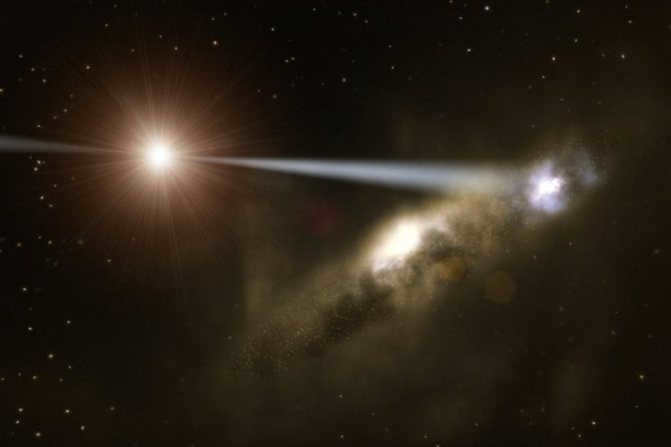
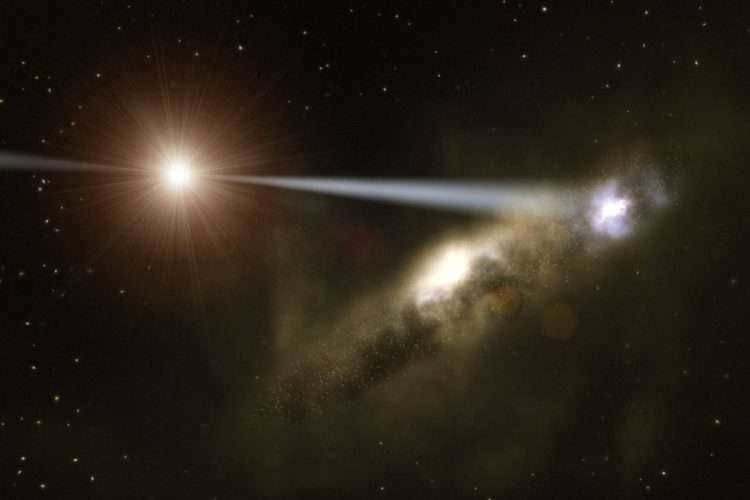
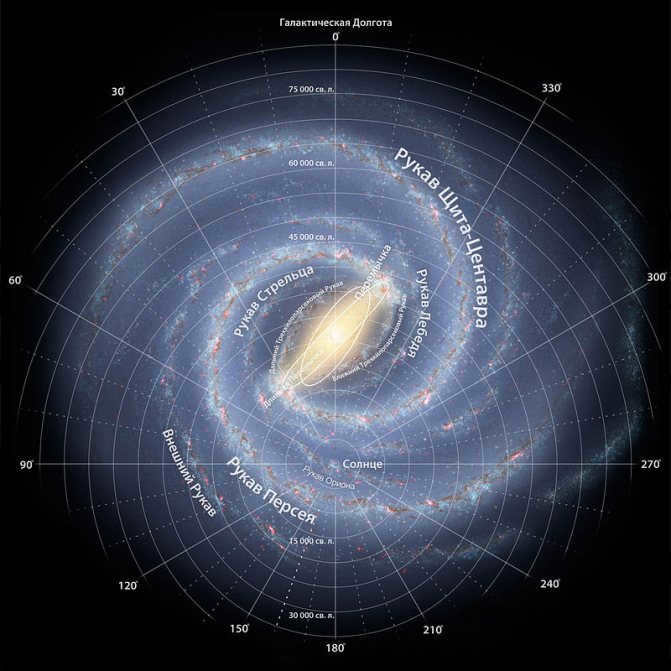
The field of astronomy, much like any other scientific discipline, has its own unique vocabulary that can often appear strange and confusing to those who are not well-versed in it. Terms such as elongation and perigee may raise eyebrows, while the distinction between pulsars and quasars can be puzzling. One question frequently asked by individuals with a keen interest in astronomy is: what exactly is a light year?
Let’s attempt to provide a simple answer.
Light-year – basic details
The light year is a unit of measurement used to calculate distances in outer space. It is commonly used in popular astronomy books and textbooks. However, in professional astrophysics, it is rarely utilized and mostly for determining distances to nearby celestial objects. The reason for this is straightforward: if distances to distant objects in the Universe were measured in light-years, the resulting values would be extremely large and impractical for physical and mathematical calculations. As a result, professional astronomers prefer to use the parsec as a unit of measurement, which is more convenient for complex mathematical calculations.
Also, don’t miss out on: The Tunguska meteorite – its time and location of impact, the aftermath, and other fascinating details
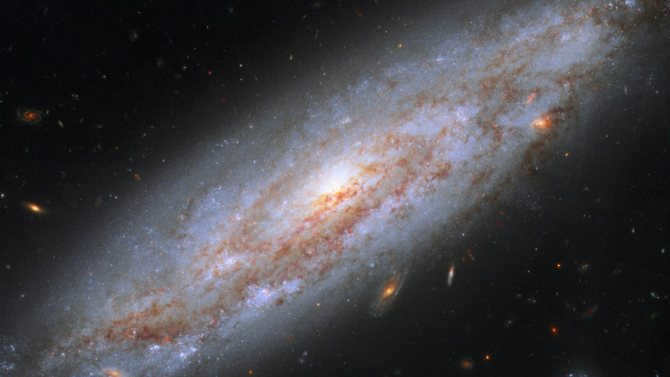
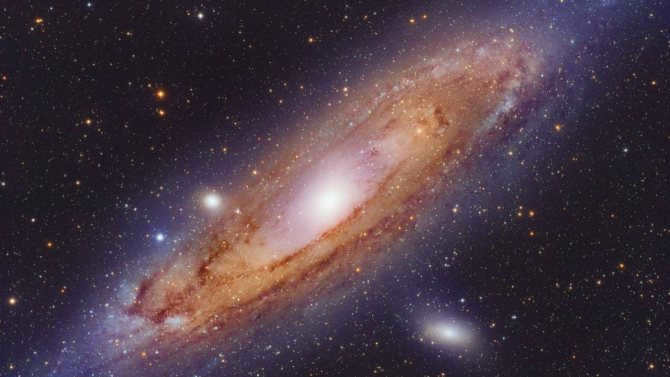


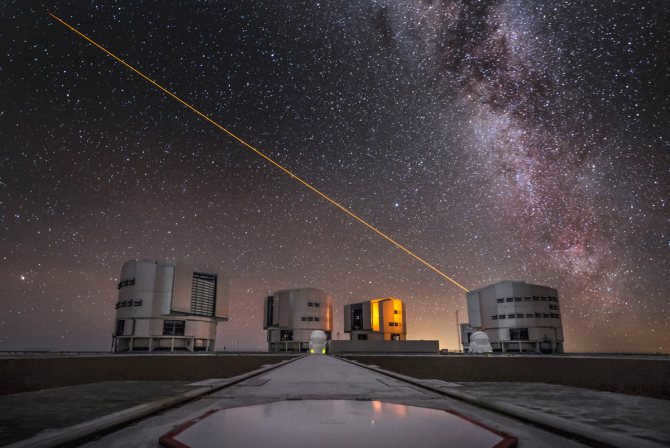
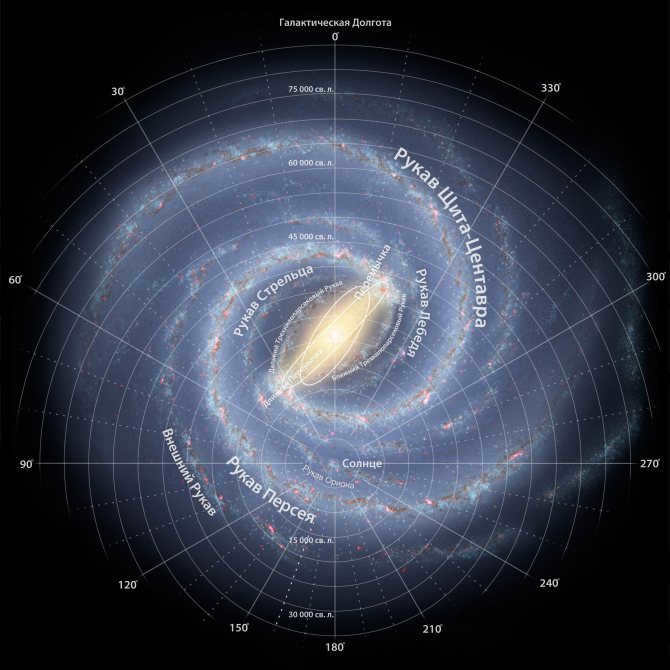
Space stations rely on solar energy to power their operations, with excess energy stored in batteries during daylight hours. To effectively control these vehicles, scientists need to accurately measure the amount of radiation received on the surface throughout the day. Since the length of a Martian day is different from Earth’s, specialized time measurement systems are necessary to calculate the energy generated.
As humans strive to explore and utilize objects in the universe, it becomes crucial to synchronize the activities of Mars rovers with the schedules of the specialists overseeing them. This requires knowing the local time of the celestial body, as Mars does not have time zones like Earth. Landers and other equipment are aligned based on the local time, which can differ significantly from Earth time.
Term definition
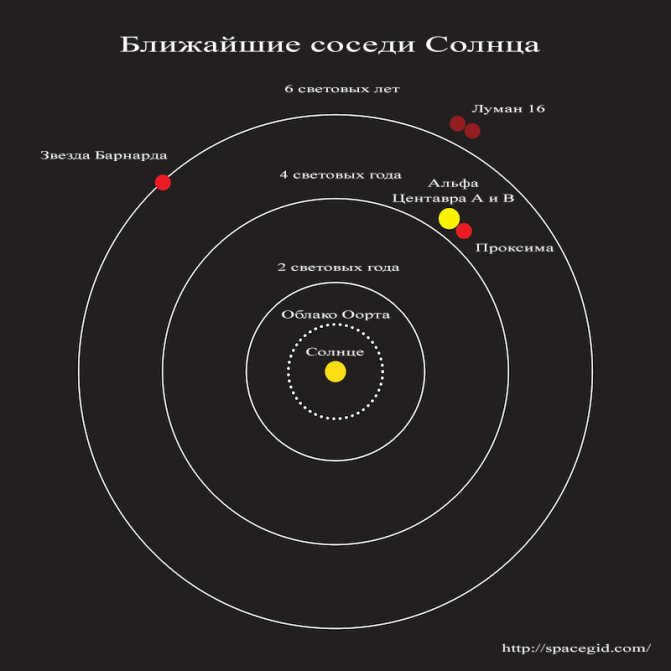
The stars that are closest to the sun
In any astronomy textbook, we can find the definition of the term “light-year”. A light-year is the distance that a ray of light travels in one year on Earth. This definition may be satisfactory for someone who is new to the subject, but a cosmology expert will find it to be incomplete. They will point out that a light year is not simply the distance that light travels in a year, but rather the distance that a beam of light travels in 365.25 Earth days in a vacuum, without being affected by magnetic fields.
A light year is equivalent to 9.46 trillion kilometers. This is the distance that a beam of light travels in one year. But how did astronomers manage to come up with such a precise definition of the path of light? We will discuss that in the following section.
What does “bright summer” mean?
The term “bright summer” refers to the duration of one July year (365.25 days), which is equal to the distance traveled by light in a vacuum during that time period.
This term is commonly used in scientific and fictional contexts, and within professional circles, the term “parsecs” with the prefixes “kilo” and “mega” is often used instead.
Prior to 1984, the term “bright year” referred to the distance traveled by light in a tropical year. However, the value has since been adjusted by 0.002%, and the practical significance of this difference is minimal due to the lack of precise measurements in bright years. The speed of light is approximately 300,000 kilometers per second.
The speed of light is approximately 300,000 kilometers per second, and a light year is equivalent to about 10 trillion kilometers (or 9,460,880,000 million kilometers). When it comes to measuring distances, it’s interesting to note that Sirius is located approximately 8 light years away from the nearest star, Proxima Centauri, which is about 4.22 light years away. Furthermore, the diameter of our galaxy, the Milky Way, is estimated to be around 100,000 light years.
Determining the speed of light: a historical perspective
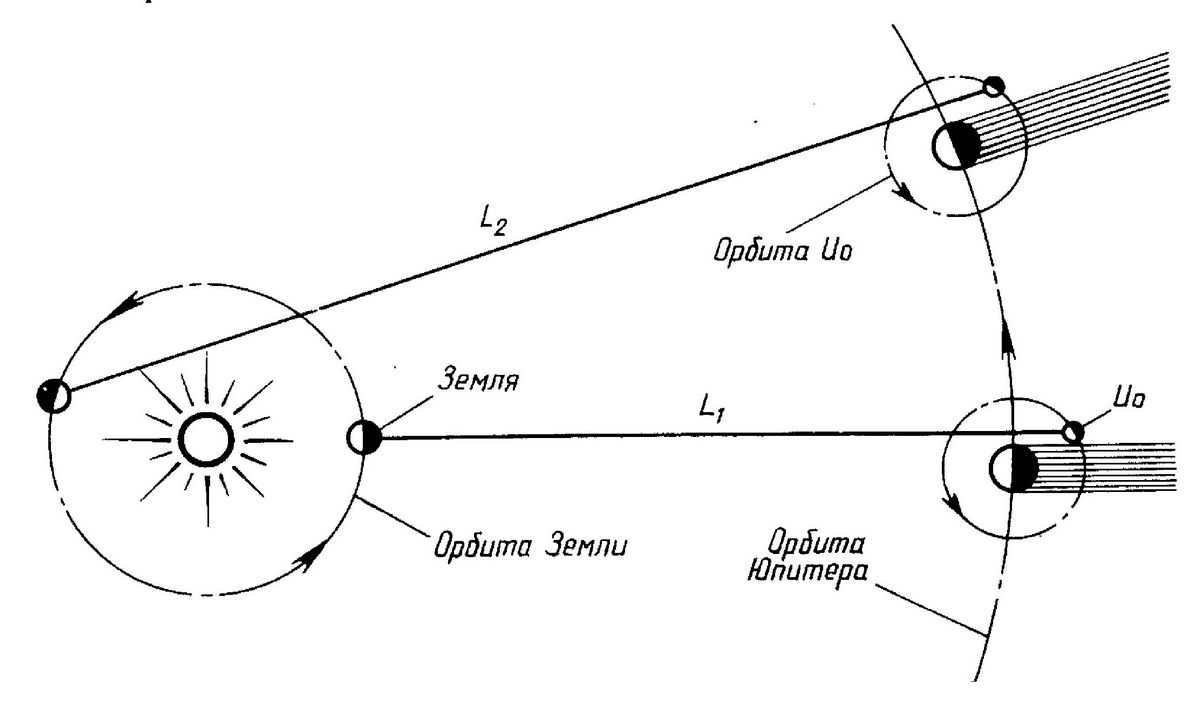
In the past, people believed that light traveled instantly throughout the universe. However, in the 17th century, scientists started questioning this theory. The first person to challenge this belief was Galileo. He attempted to calculate the time it took for a beam of light to travel a distance of 8 km. Unfortunately, the experiment was unsuccessful because this distance was too small to accurately measure the speed of light.
The initial significant change in this matter was observed by the renowned Danish astronomer Olaf Rømer. In 1676, he made a notable observation regarding the variation in the timing of eclipses of Jupiter’s moons based on the proximity and distance of Earth to them in outer space. Römer successfully linked this observation to the fact that as Earth moves further away from Jupiter, it takes more time for the reflected light to travel the distance to our planet.
Römer accurately grasped the essence of this fact, but he was unable to accurately calculate the speed of light. His calculations were erroneous because during the seventeenth century, he did not have precise data on the distances between Earth and the other planets in the solar system. These data were determined at a later time.
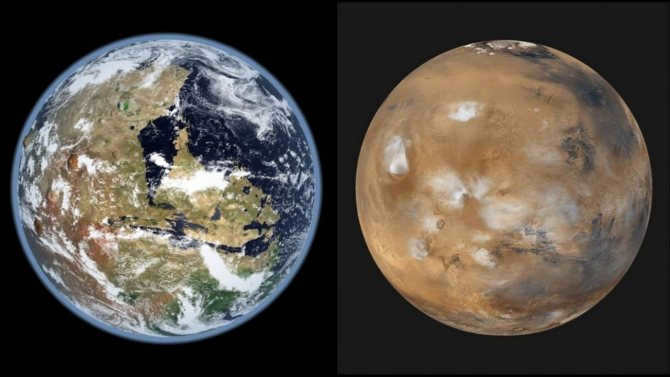
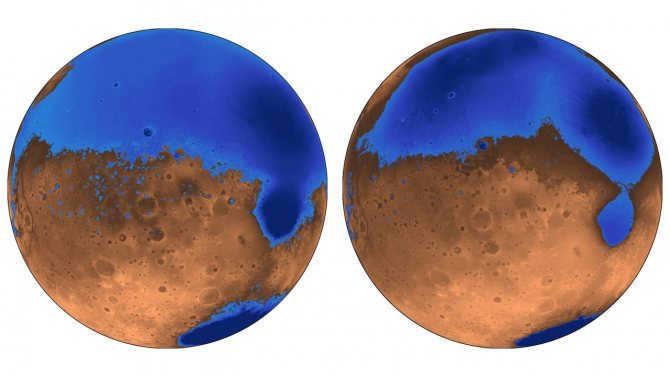

A comparison of the duration of a year on Earth and Mars
In the field of astronomy, there exist various definitions for the length of a year.
- Stellar, or sideric year – the duration it takes for a complete revolution around the Sun to occur.
- Solar, or tropical year – the period in which the Sun goes through one cycle of seasons.
Irrespective of the method of measurement – whether in relation to the Sun or the stars – the duration of a Martian year is longer than that of an Earth year due to variations in velocity and orbital distance. The duration of a year is quantified in terms of days. Consequently, a year on Mars spans 686.98 days, while on Earth it lasts 365.26 days, representing a nearly 50% reduction. Similarly, the tropical period on the blue planet amounts to 365.24 days, constituting approximately half of the interval observed on the red planet.
Mars, similar to Earth, experiences a unique year. Earth, with its smaller elliptical orbit, has seasons that are roughly the same length. However, the center of Mars’ orbit is significantly displaced in relation to the Sun. As a result, Mars behaves differently, moving faster when it is closer to the Sun and slower when it is farther away. This leads to a shorter winter of 4 months in the northern hemisphere, while spring, which occurs at a more distant position, lasts for 7 Earth months or 193 sols. In the southern hemisphere, the difference between seasons is much smaller.
If we were to convert Martian time into standard terrestrial calendar months, it would equate to 22 months and 18 days, or 98 weeks. On Earth, this would be equivalent to 12 months and 52 weeks, respectively.
Advancements in Research and Refining the Concept of the Light Year


A hypothetical photon on a journey from Earth to the Moon. All proportions are upheld.
In 1728, the English astronomer James Bradley, who discovered the phenomenon of star aberration, became the first to estimate the approximate velocity of light. He calculated its speed to be 301,000 kilometers per second. However, this value proved to be inaccurate. More precise methods for determining the speed of light were developed without relying on celestial bodies – right here on Earth.
The origin of sol
What exactly is a sol on Mars? When it comes to missions to the Red Planet, the international standard requires the use of time reference systems based on Martian time.
These Martian days, commonly known as sols, are divided into 24 hours, just like Earth days.
One thing to note is that this breakdown takes into consideration the fact that Martian seconds are 2.7% longer than seconds on Earth.
Scientific exploration on Mars has posed challenges in terms of time calculation. As a result, the Martian sol has emerged as a distinct unit of time measurement.
The precise velocity of light
In the past century, scientists have successfully determined the precise velocity of light. Using Maxwell’s theory of electromagnetism, along with advanced laser technology and calculations that account for the refractive index of light in the atmosphere, scientists were able to calculate the exact value of light’s velocity: 299,792.458 km/s. This value is still widely used by astronomers. Additionally, scientists were able to calculate the distance covered by light in a day, month, and year. Through straightforward calculations, they arrived at a staggering figure of 9.46 trillion kilometers – the distance a beam of light would travel along the Earth’s orbit.
What is the reason for the Martian year being twice the length of the Earth year?
Various Examples of Distances Measured in Light-Years

The distance separating the Earth and the Moon
- 63,241.077 astronomical units and 0.306,601 parsecs are equivalent to one light-year;
- The distance from the Earth to the Moon is equivalent to 4-10-8 light-years or 380,000 kilometers. In other words, it takes only 1.3 seconds for a beam of light emitted from Earth to reach the Moon;
- The center of the Milky Way Galaxy is positioned 26,000 light years away from the Sun;
- It takes approximately 5 hours for sunlight to reach Pluto, one of the most remote objects in the solar system;
- Proxima Centauri, the star that comes after the Sun in terms of proximity, is located 4.2 light-years away from Earth, while Andromeda, the closest galaxy to our own, is situated 2.5 million light-years away.
Measurement
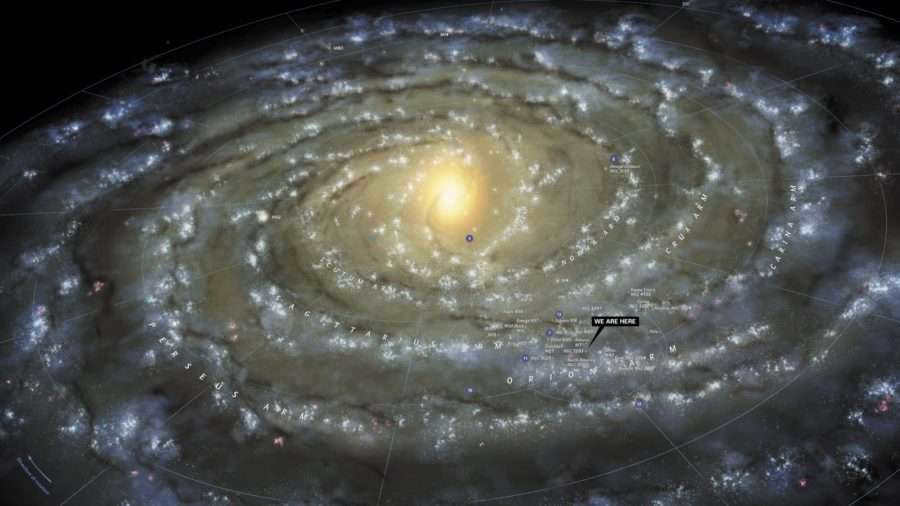
- If a spacecraft were to leave the solar system at a speed of 16.7 kilometers per second, it would take approximately 18,000 years to travel the first light-year.
- Traveling to our nearest star system, Alpha Centauri, which is 4.36 light-years away, would take about 78,000 years.
- It would take approximately 1 billion, 780 million years for a spacecraft to cross our Milky Way galaxy, which is approximately 100,000 light years in diameter.
- Reaching the Andromeda Nebula, the nearest big galaxy to us, would take 36 billion years.
- These are just some of the mind-boggling distances and time frames involved in space travel. It is even theorized that the universe itself is only 16 billion years old.
Video
Sources
We often receive intriguing questions that have unconventional answers.
One of these questions is posed in the title. Indeed, how many earth years are equivalent to one light year? You might be disappointed, but there isn’t a definitive answer.
The reason is that a light year is not a unit of time, but a unit of distance. More precisely, a light year represents the distance that light travels in a vacuum in one Julian year (equivalent to 365.25 standard days or 31,557,600 seconds) according to the International Astronomical Union.
Now, let’s attempt to calculate the distance of a light year.
In order to accomplish this, we utilize the benchmark of 300,000 kilometers per second (which precisely corresponds to the speed of light) and then multiply it by 31.56 million seconds (which is the approximate number of seconds in a year). The result of this calculation is an astonishingly large figure of 9,460,800,000,000,000 kilometers (or 9.46 million kilometers). This incredible measurement equates to the distance of one light year.
- 1 light month is equal to approximately 788,333,000,000,000 kilometers
- 1 light week is approximately 197,083,000 kilometers.
- 1 light day is roughly 26,277 million kilometers
- 1 light hour is around 1,094 million km
If you wish to determine the number of kilometers in a light year, a simple online calculator can be utilized.
Enter the desired number of light years in the left field to convert. The result of the calculation will be displayed in the right box. Simply click on the appropriate link to convert light years or miles to other units.
Mars rotation period
The Red Planet’s orbital period is twice as long as Earth’s orbital period.
– The period of revolution around the Sun is equal to 1.88 revolutions of Earth. – This measurement applies to the planet’s position relative to the stars and is known as the sidereal period. – The sidereal period is 2.135.
The planet’s movement around the Sun follows an elliptical orbit, which is 1.5 times farther from the Sun than Earth’s orbit. It has been determined that more than a million years ago, Mars’ orbit was circular.
– When the Red Planet is closest to the Sun, at perihelion, its orbital radius is around 207 million kilometers. – At its farthest distance from the Sun, at aphelion, the radius is 250 million kilometers. – The significant distances covered by the planet result in a substantial annual temperature fluctuation. – Mars has a larger orbital radius compared to Earth due to its distance from the Sun. – The orbit’s semi-major axis is quite large, with its greatest diameter measuring 1.5 light years.
What is the origin of the sun?
Exploring the origins of the sun is a fascinating endeavor. Instead of personally traveling to the Red Planet, scientists rely on automated vehicles to gather data during planetary exploration. One crucial aspect of this exploration is understanding solar radiation, which powers the rovers. While the length of a day on Mars differs slightly from Earth, the Martian year is significantly distinct. To accommodate these differences, scientists have developed a Martian clock and a specialized calendar that are synchronized with the Red Planet. Despite the variations, the tilt of Mars’ axis of rotation is not too dissimilar from Earth’s, resulting in similar seasonal fluctuations for both planets.
The point of closest approach between Mars and Earth is known as a conjunction, a phenomenon in which the planet is situated in the opposite direction of the Sun.
– Conjunctions occur approximately every 26 months at various positions in the orbits of Earth and Mars. – Every 15 years, Mars reaches its perihelion, the point of closest approach to the Sun for the Red Planet. – This event is referred to as the Great Opposition. – During this time, Mars achieves its highest brightness and largest apparent size. – The time it takes for light to travel from the Sun to Mars is approximately 12 minutes, assuming the speed of light.
1. The minimum distance (perigee) from the Sun is 1.52 astronomical units or 55.67 million kilometers. 2. The maximum distance, or aphelion, is approximately 401 million kilometers. 3. On average, the Sun and Mars are separated by 228 million kilometers or 1.52 astronomical units.
The movement of Mars
Mars can be observed by humans without the need for a telescope. During perihelion, the planet reaches its maximum brightness and is only surpassed in luminosity by the Sun and the Moon. By carefully studying the motion of this celestial body, one can observe that Mars appears to change its direction of movement in space. However, it should be noted that the actual backward motion of the planet is impossible. The illusion of reverse motion is caused by:
– The difference in speed between Earth and Mars.
– The distance between the Martian orbit and the Earth’s orbit in relation to the Sun.
When Earth catches up with Mars as they both orbit the Sun, it creates the illusion of Mars moving in a backward direction. Astronomers commonly refer to these phenomena as retrograde changes.

